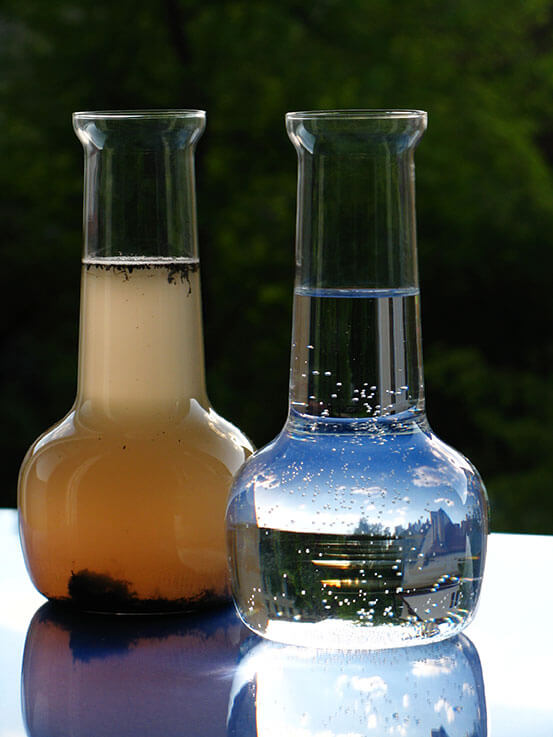Our Process
The simplified extended aeration system for the wastewater treatment, emphasizes the less complicated process, easier to operate and at the same time capable of performing the necessary treatment. It is designed for the optimization of the operation equipment, so the probability of failure is significantly reduced.
As well as the structural engineering and equipment of the plant are designed to withstand the variations in the water flow and in the concentration parameter, making them more stable to sudden changes in the influent, compared to other processes.
As to the problems of water quality control, the process of the simplified extended aeration fulfills the concentrations of the parameters below the limits set by the Mexican health regulations or specific discharge conditions set forth by the competent authorities.
The simplified extended aeration system consists of diverse unitary processes whose final goal is the removal of organic contaminants from the wastewater to obtain a secured water discharge of high quality. This is possible through the biological conversion of the biochemical oxygen demand (DBO5) in presence of oxygen (aerobic process) with moderate agitation and through the recirculation of the sludge (SST) until the end of his life cell.
As additional benefits we have the stabilization of the levels of nitrogen and phosphorus in the treated water - as well as other compounds - and total mineralization of the sludge generated. The plants operate odor free and no greenhouse gases are produced as: Methane, Carbon dioxide, hydrogen sulfide (CH4, CO2 y H2S) considered as factors that cause global warming.
Flow Diagram
Flow chart of our patented waste water treatment systems.
100% Eco-Friendly
| Parameters | Unidad | NOM 003-SEMARNAT-1997 (National) | LB PROCESS |
|---|---|---|---|
| Grease & Oils | mg/lt | 15 | 3-10 |
| Sedimentable solids | mg/lt | 1 | 0 |
| SST (Suspended solids ) |
mg/lt | 20 Direct contact 30 Occasional contact |
0-10 |
| DBO5 (Biochemical oxygen demand) |
mg/lt | 20 Direct contact 30 Occasional contact |
0-10 |
| Nitrogen | mg/lt | 15 | 0-10 |
| Phosphorus | mg/lt | 5 | 0-5 |
| Faecal coliforms | NMP/100ml | 240 | 0-100 |
| Helminths (h/l) | HHL | 1 | 0 |
| NTU (Turbidity Units) |
- | - | 0-5 |

